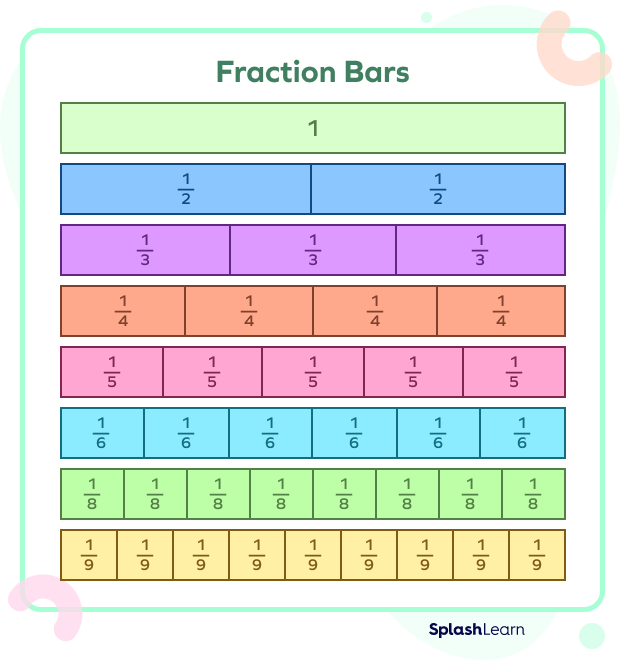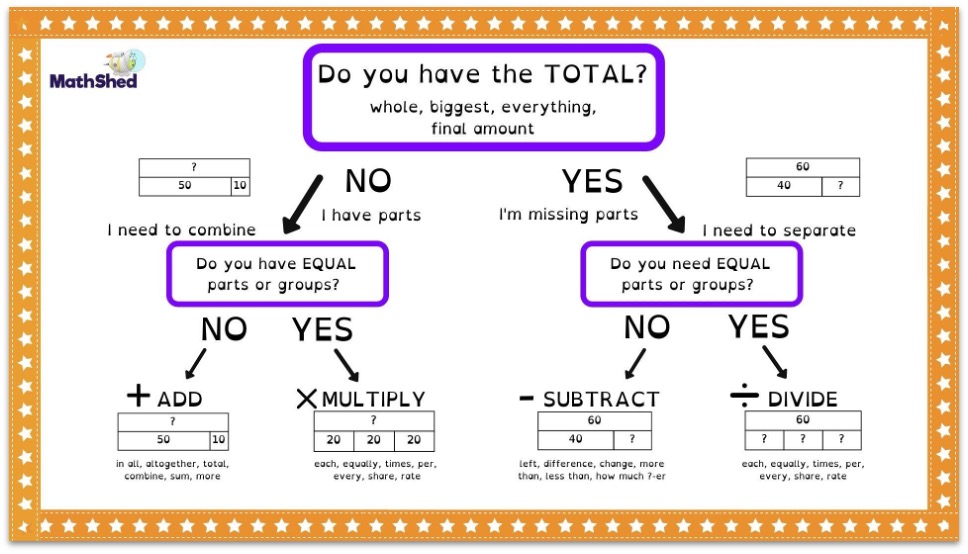Enhance your math lessons using bar model drawing techniques for better comprehension
Wiki Article
Exploring Bar Version Illustration Techniques: A Comprehensive Overview to Envisioning Math Concepts
Bar version drawing strategies act as a valuable resource for both instructors and students in envisioning mathematical concepts. These designs streamline complicated mathematical partnerships, assisting in the comprehension of enhancement, multiplication, reduction, and department. This guide outlines reliable approaches for implementing bar designs, cultivating active interaction and real-world links. As viewers explore the useful applications and mentor ideas, they will certainly uncover exactly how these methods can change their strategy to maths.Understanding the Basics of Bar Design Illustration
Bar design attracting offers as an effective aesthetic device in maths, facilitating the understanding of numerical relationships and problem-solving techniques. This method includes representing numbers and their relationships with rectangle-shaped bars, making it less complicated to envision procedures such as enhancement, reduction, multiplication, and division. Each bar's length matches to a details worth, enabling learners to contrast quantities and understand percentages plainly.To create a bar model, one starts by determining the problem's crucial elements, often breaking it down into components that can be aesthetically represented. As an example, in a basic addition trouble, two bars can be attracted, with their lengths representing the addends. The mixed length shows the sum. Furthermore, bar designs can be adjusted for much more complex troubles, including fractions and proportions, by readjusting benches appropriately. Understanding these fundamentals lays a strong structure for efficient problem-solving and much deeper mathematical understanding.
Advantages of Using Bar Versions in Mathematics
Making use of bar models in mathematics supplies various benefits that improve learning and comprehension. These graphes aid pupils in comprehending complicated ideas by damaging them down into workable parts. Bar versions offer a clear structure for highlighting connections in between numbers, making abstract concepts extra concrete. They advertise a much deeper understanding of mathematical procedures and help with analytical by permitting learners to imagine the information they are dealing with.Bar models support the advancement of vital assuming abilities, as pupils must assess and interpret the visual information to attract conclusions. This method motivates active engagement with the material, reinforcing retention and mastery of mathematical concepts. By cultivating a solid structure in aesthetic literacy, bar models empower learners to come close to numerous mathematical obstacles with self-confidence. Overall, the assimilation of bar versions right into mathematics education and learning proves advantageous in cultivating both understanding and analytical abilities among students.
Applying Bar Designs to Addition and Reduction
Bar models act as an effective tool for aesthetically representing addition and reduction issues. By showing the connection between numbers, they enhance understanding and facilitate analytic. Additionally, real-life applications of these versions can assist learners realize mathematical principles in sensible contexts.Representing Addition Aesthetically
When students run into addition and subtraction troubles, visual help can substantially boost their understanding of these operations. Bar models act as reliable tools for standing for addition. By separating a rectangle right into segments that match to the numbers included, trainees can picture the partnership in between the amounts. For example, if a pupil needs to include 3 and 5, they can create a bar split right into 2 areas: one section standing for 3 and the various other standing for 5. This clear representation not only streamlines the addition procedure yet also enhances the principle of integrating amounts. As students adjust these visual help, they create a much deeper understanding of addition, bring about improved analytic skills and higher confidence in their mathematical capacities.
Subtraction With Bar Designs
Although subtraction is usually perceived as a much more intricate procedure than enhancement, bar versions can effectively clarify this procedure for pupils. By aesthetically standing for the amounts involved, students can much better comprehend how numbers associate with each other. In a bar design for reduction, one bar stands for the overall, while one more suggests the amount being deducted. This visual distinction helps students grasp the concept of "eliminating." For circumstances, if a bar reveals 10 devices, and another bar representing 4 units is gotten rid of, pupils can conveniently see that 6 devices continue to be. This method not only fosters understanding of reduction yet likewise aids in developing problem-solving skills, allowing students to envision their mathematical reasoning and boost their total understanding of mathematical concepts.Real-Life Application Instances
Understanding reduction with bar models lays a structure for applying these strategies in real-life circumstances. In numerous contexts, such as budgeting or purchasing, people can picture how much money remains after expenses. For example, if an individual has $50 and spends $20, a bar model can represent the total amount and the invested portion, showing that $30 is left. Additionally, moms and dads can use bar versions to help kids comprehend the number of even more things need to be contributed to finish a set, such as having 3 apples and requiring five. This graph simplifies intricate troubles, helping with comprehension and retention. Eventually, bar designs act as effective tools in daily decision-making, boosting mathematical understanding in useful scenarios.check this
Picturing Reproduction and Department With Bar Designs
In discovering the application of bar designs for reproduction and division, it is crucial to grasp their fundamental ideas. Creating multiplication models allows learners to envision partnerships between numbers, while efficient division strategies can be highlighted through these aesthetic aids. This strategy improves comprehension and analytical skills in maths.Understanding Bar Models
Bar versions offer as a powerful aesthetic tool for illustrating the principles of reproduction and division. They enable important link learners to stand for mathematical connections in an organized layout, promoting a much deeper understanding of these procedures. In reproduction, bar models present groups of equivalent size, enabling people to imagine the complete amount when incorporating these groups. On the other hand, in division, bar designs help depict exactly how a total is split right into smaller, equivalent parts, making clear the principle of dividing. By utilizing these visual help, students can understand the underlying concepts of reproduction and department much more efficiently. This strategy not just improves understanding yet likewise supports analytical abilities, making bar designs a vital asset in mathematical education.Constructing Multiplication Designs
Creating multiplication designs making use of bar layouts provides a clear approach for visualizing the process of multiplication. These models enable learners to represent multiplication as groups of equal components, making abstract concepts extra concrete. To show (3 times 4), a trainee can attract one bar split into three equal sectors, each standing for 4 systems. Furthermore, producing a 2nd bar with the exact same length strengthens the understanding of repeated addition, as each segment matches to one team. This aesthetic depiction not only aids in understanding multiplication yet additionally boosts analytic skills. By utilizing bar models, trainees can much better understand connections in between numbers and establish a robust foundation for a lot more complicated mathematical ideas, resulting in enhanced self-confidence in check my site their abilities.Picturing Division Techniques

Resolving Word Troubles Utilizing Bar Design Techniques

In a problem involving enhancement and reduction, students can draw different bars for each amount and after that adjust them to discover the solution. This process not only makes clear the issue but additionally promotes a much deeper conceptual understanding. Bar designs can be adjusted for various types of word problems, making them flexible throughout different mathematical topics. Eventually, making use of bar designs can significantly improve students' analytic skills by giving a clear aesthetic path to come to the proper response.
Integrating Bar Designs in Different Mathematics Topics
Bar designs can be perfectly incorporated right into various mathematics topics, boosting students' understanding of ideas beyond standard arithmetic. In algebra, these visual tools aid in representing inequalities and equations, making it possible for students to imagine partnerships between variables. When tackling geometry, bar models can show the residential properties of shapes and spatial reasoning, aiding trainees comprehend concepts like area and perimeter properly. In statistics, bar designs promote the analysis of data sets, permitting pupils to contrast quantities and identify fads visually. In addition, integrating bar designs within dimension subjects help in recognizing units and conversions by supplying a substantial representation of amounts. By employing bar designs throughout various mathematical locations, instructors can foster a deeper comprehension of complicated principles, therefore boosting analytical abilities and advertising crucial thinking (bar model drawing techniques). This convenience shows the energy of bar versions as a fundamental device for students in their mathematical tripTips for Training Bar Versions Properly
Incorporating bar versions right into training practices needs thoughtful methods to optimize their efficiency. Educators must start by introducing bar versions with straightforward, relatable examples that students can quickly realize. This aids to construct self-confidence and knowledge with the principle. Progressively boosting the intricacy of problems enables students to apply their skills gradually. In addition, teachers must encourage students to create their own bar models, promoting active involvement and possession of their discovering.Integrating joint activities can additionally enhance understanding, as trainees go over and fix troubles in groups. Constant responses is crucial; teachers need to provide positive discourse on trainees' bar model depictions to direct renovation. Lastly, attaching bar versions to real-life scenarios enhances their importance, assisting students see the functional applications of their mathematical skills. By carrying out these strategies, teachers can efficiently harness the power of bar versions in their maths direction.
Regularly Asked Concerns
Can Disallow Models Be Utilized in Various Other Subjects Besides Math?
Bar models can without a doubt be utilized in different subjects beyond mathematics. They efficiently illustrate concepts in science, social studies, and language arts, assisting to aesthetically represent partnerships, processes, and ideas for improved understanding throughout self-controls.What Age Group Is Best Suited for Discovering Bar Models?
Bar models are best suited for youngsters ages 7 to 12, as they develop concrete thinking abilities during this duration (bar model drawing techniques). At this age, trainees can properly realize abstract concepts through aesthetic representation and analytical techniquesAre There Digital Equipment for Creating Bar Models?

Exactly How Can I Assess Pupil Recognizing of Bar Models?
Assessing student understanding of bar versions can involve tests, empirical analyses, and seminar. Educators might likewise evaluate pupils' finished versions and their capacity to clarify their reasoning, making sure a complete assessment of understanding.What Prevail Errors When Utilizing Bar Versions?
Common blunders when making use of bar designs consist of misrepresenting amounts, falling short to precisely classify bars, perplexing addition and reduction, ignoring to use constant ranges, and neglecting the relevance of clear aesthetic splitting up between different components.In addition, bar versions can be adjusted for much more complicated problems, consisting of ratios and portions, by readjusting the bars appropriately. Reduction is usually perceived as a much more complicated operation than enhancement, bar versions can efficiently clarify this process for students. In a bar design for subtraction, one bar stands for the total amount, while another suggests the quantity being subtracted. If a bar shows 10 systems, and an additional bar representing 4 units is gotten rid of, trainees can quickly see that 6 systems stay. When dividing a total into equal groups, trainees can attract a lengthy bar to stand for the entire and after that segment it into smaller sized bars that show each group.
Report this wiki page